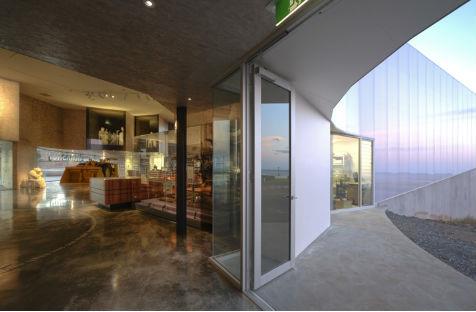Burnie Makers Workshop provides a crucible for creative excellence and artistic comradeship. It must be preserved.
‘The collegial opportunities afforded to a Maker by mixing with artists across all genres is absolutely unquantifiable,’ artist says Rita Power. ‘In the three plus years that I’ve had the pleasure to be part of the Makers Workshop I have grown artistically, spiritually and, I hope, as a member of the artistic community. I’ve achieved things that I thought were beyond my capabilities, I’ve experienced moments of absolute joy and I’ve given and received support and encouragement in equal measure. My time as a maker has been a gift beyond measure.’
Power is one of several artists from Burnie’s Makers’ Workshop whose work was selected for the annual Bendigo Bank Material Girl exhibition. The exhibition is run by Tasmanian Regional Arts and showcases female artists from around the state. The touring exhibition is currently on display at the Burnie Regional Art Gallery.
The makers had a high level of representation in this year’s exhibition. From a total of forty five pieces selected, seven were by Burnie makers. Burnie maker Pam Thorne won the Bell Bay Aluminium Award for overall excellence for the The Blue Between. and last year’s major award was taken out by another maker from Burnie, Susan McArthur.
This recognition has been celebrated despite the cloud of uncertainty hanging over the Makers’ Workshop. In March the Burnie City Council announced it was transferring ownership of the building and its operations to the University of Tasmania (see previous ArtsHub stories). Currently the makers volunteer their time, working and interacting with visitors in specially designed artists’ pods. The university have yet to clearly articulate their vision for Makers’ Workshop or what the future role of the makers will be. They have announced a six month consultation process during which time they will be seeking community input.
Against this background, the achievements of the makers at the Material Girl exhibition are significant. Many of the pieces were completed at the peak of the community furore over the university deal, with the ‘fight for Makers’ Workshop’ dominating many of the artists lives.
But Pam Thorne says the fight has only strengthened the bonds between the makers. ‘I can honestly say I never would have created a work like The Blue Between without drawing on the relationships I have formed with other artists at Makers’ Workshop. One of the artists gave me the string I used to knit the individual pieces. She saw it online and thought of me, showed up with it, I began pondering what I could make with it, and this is what eventuated.’
The opportunity to share information about materials also influenced the work of the 2012 winner, milliner Susan McArthur. “I won for a digital photograph of a female wearing a middle-eastern style hood which I partially constructed on my days at the Makers’ Workshop. It was two other makers – a jeweller and a sculptor – who put me onto the copper wire I used to knit the hood. I also had success using that wire in 2011 when my military inspired wire crown won Fashions on the Field at Derby Day in Melbourne. This created national media attention, as it was such an unconventional piece. It was even compared to the Jean Shrimpton mini-dress scandal at the Melbourne Cup in 1965!’
The benefits of the interactive environment at Makers’ Workshop go beyond the makers themselves. Donna Miller, a staff member at the centre received a ‘highly commended’ for her piece, Life Box. She says: ‘The conversations I have with the makers push me – they free me. I had always tinkered on the side but never really took my creativity that seriously. But talking and interacting regularly with the makers… they have been particularly influential and a couple are quite pushy! One talked me into entering Material Girl. She said “Stop pretending you are not an artist.” I can see the influence of these makers in what I do. I take bits and pieces from what I see without realising it. It is also great to be able to talk to practising artists on site about the techniques which they use.’
This sentiment is echoed by Pam Thorne: ‘I love seeing how the makers work – the technical aspects of what they do is so interesting and illuminating. They are really experienced in their field, so their ‘making’ – all the busy, repetitive work of a craftsperson – is there for the viewing. It’s so personalised, like a fingerprint! As a fellow artist you can’t help but be inspired.’
The networking benefits for the makers are also crucial. Painter Gail May emphasises that information about upcoming exhibition opportunities and state government funding initiatives can be shared between artists. ‘We pass on information to improve our products, develop new ones and how to present them professionally’.
In its current form Makers Workshop not only showcases and supports artists – it provides marketing materials and sales opportunities. As Gail May says: ‘Setting up Artist Run Initiatives is hard work and often takes away the creativity of one or more of the artists who take on administrative roles… The Makers’ Workshop has enabled us just to be artists.”
Lyndal Thorne is the daughter of artist Pam Thorne.





